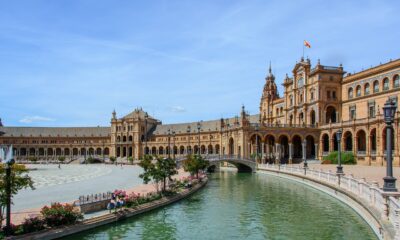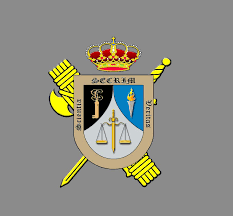

Driving in Spain
QUESTIONS FOLLOW TRAIN TRAGEDY
Prior to the incredible disaster this week, there had been a lot of positive coverage given to the Spanish high speed train network, with the launch of the Madrid to Alicante route, a spectacle of both excitement and protest, breaking all records and a…
Related Posts:
The post QUESTIONS FOLLOW TRAIN TRAGEDY appeared first on Today in Spain.

Prior to the incredible disaster this week, there had been a lot of positive coverage given to the Spanish high speed train network, with the launch of the Madrid to Alicante route, a spectacle of both excitement and protest, breaking all records and anticipated passenger numbers in the first month, shortly followed by the announcement of another high speed route from Alicante, this time to Zaragoza, and the commitment of the government to push the development of the ‘Mediterranean Corridor’ within a few years, but in a climate of austerity, why is such an expensive project being given such investment?
The answer to that question perhaps becomes clear, when we realise that as well as providing train services to the people of Spain, this network has also become a working model for use in a multi-billion euro opportunity to build high speed rail networks around the globe, from Saudi Arabia to South America, recession hit Spain is fighting to get as much of that available capital as it can.
In 2011, Spain surprised many by outbidding the favourites France in a 6.7 billion euro contract to build and operate a 450 kilometre high speed rail link in the desert between the holy cities of Mecca and Medina, making the contract awarded to the consortium the biggest international contract ever awarded to Spain.
In September this year, Brazil is set to award a 12.7 billion euro contract for a high speed rail network linking the cities of Rio de Janeiro, Sao Paulo and Campinas. Spain is already prepared to bid for this work, with a consortium of 11 public and private companies, to which the Secretary of State, Rafael Catalá, said, “It is important because it is Latin America and ties between Spain and Latin America are especially intense”, continuing, “It’s also important because it is high-speed rail and we want to show that we are world leaders in this area”.
Indeed, Spain is one of the world leaders, with the second largest high speed network in the world, with 3,100 kilometres of high speed lines, second only to China, but some distance ahead of the main competitors of France, Germany and Japan, all three of whom have almost become synonymous with the concept of fast trains.
This is not a new field for the Spanish firms however, since the country´s own first high speed line opened in 1992, the country has been involved in the high-speed rail link linking Ankara and Istanbul which was inaugurated in 2009, and it´s not only the tracks, train manufacturer Talgo, with its roots in the 1940´s, providing trains to companies around the world, from the USA to Europe, and even as far as Kazakhstan.
Continuing to explain the virtues of international growth, Catalá continued, “There are also a series of projects planned in the medium term in Russia, Kazakhstan and the United Arab Emirates”, but then went on to warn that the market for high-speed rail is not enormous, “It is not so clear that many other nations will do what France or Spain have done, which is to pursue a political policy based on a national model of mobility which favours high-speed rail over others methods of transportation”, quantifying, “High-speed rail is difficult to justify on a cost-benefit analysis, unless it is in the very long term”.
But then we must question the validity of the claims against the potential for earning, especially if the network is seemingly nothing more than the toys and the tools of salespeople. The tragedy in Santiago de Campostela, whilst likely to have been caused by “human error”, the question as to why the train itself wasn´t able to respond and brake automatically in such a dangerous situation has already been raised, with acknowledgement that although the lines themselves were upgraded to carry the high speed trains, the signalling system, which would be the element capable of communicating directly with the train, has not yet been brought up to date.
On the Alicante network, we know a similar situation exists, following the launch of the new services here, when, at the time of the launch, the initial investment was explained, including contributions from Europe, along with the now point of concern that “with speeds set to be able to increase, once the signalling system receives a further upgrade in the future”.
A similar picture of “spin” becomes clear when we look at passenger figures. Yes, it is true that passenger numbers on the Alicante to Madrid route are promising, but comparing them to a year ago, when the service didn´t exist, and when prices are halved, during one of the biggest fiestas on the coast, is bound to put a different slant on those numbers. In fact, albeit the world leader in construction, across the entire network, France has six times more passengers than Spain, whereas in Japan, that figure is a staggering 15 times more.
So how will this most tragic event affect the opportunity to bid or win these lucrative contracts? The EU has said that the Spain crash is the “most serious incident in the last 15 years”, the European Commission Vice-President responsible for Transport, Siim Kallas, asking the Spanish authorities to clarify the cause of the accident, before considering whether action is needed at European level to improve the safety of the rail network.
Despite the network running on antiquated signalling systems, themselves needing investment to be renewed, and despite the enormous loss of life in this one crash, statistically, the risk of fatal train crash in Spain is well below EU average, according to data distributed by the European Railway Agency, whose figures indicate that the risk is almost 50% lower than in Europe as a whole.
There is no question that the event will be a black spot on both the confidence of passengers, and the future growth of the network in Spain and abroad, but there is also no doubt that with so much money at stake, no government would walk away and risk losing that income, so it is quite likely that, despite possibly being the cause of a mistake by a single person, the severity of risk that future incidents may carry are sure to encourage questions to be asked as to how a repeat will be avoided in the future.
Filed under: http://www.theleader.info/article/40045/
Car and Motor Insurance | Spanish Home Insurance | International Money Transfers | Send Money to Spain | Spain Property | Online International Payments | Property in Spain
Costa Blanca Property for Sale | Cabo Roig Property for Sale | International Payments |
The post QUESTIONS FOLLOW TRAIN TRAGEDY appeared first on Today in Spain.
-

 Court News2 weeks ago
Court News2 weeks ago66-year-old suspect sexual assault surfer on trial
-

 Crime and Policing2 weeks ago
Crime and Policing2 weeks agoThe Guardia Civil arrests three people for illegal street race
-

 Crime and Policing2 weeks ago
Crime and Policing2 weeks agoWarning issued over latest text message scam
-

 Driving in Spain1 week ago
Driving in Spain1 week agoHow Long Does it take to Receive a Traffic Fine Through the Post?




















